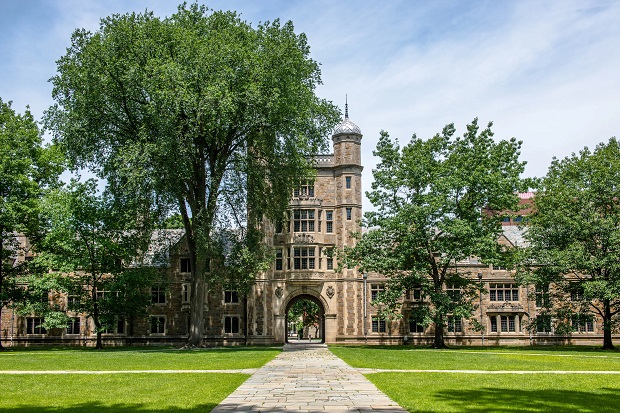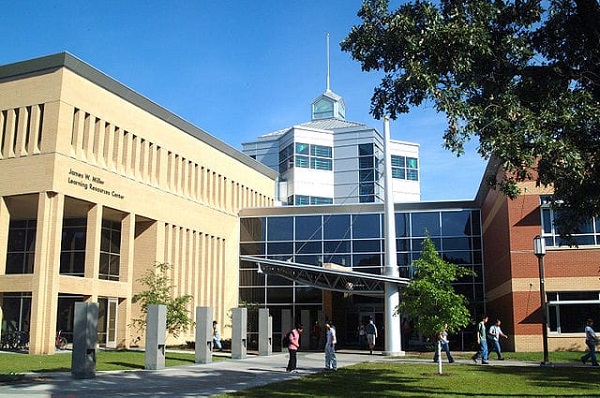The Midwest is a treasure trove of academic institutions, and when it comes to the arts, it stands out with some of the finest colleges nationwide. If you’re seeking a blend of vibrant culture and exemplary education in fine arts, the Top Arts Colleges in the Midwest offer just that. This guide takes you through the crème de la crème, where creativity meets tradition and innovation in the heartland of America.
Ready to embark on your journey to artistic excellence? Let’s explore the educational havens that dot the Midwest, institutions that promise to nurture your talents and shape your artistic future.
Top Arts Colleges in the Midwest
Choosing the right arts college can shape your future as an artist, designer, or performer. In the Midwest, an array of prestigious institutions offers exceptional programs designed to hone the craft of creative minds. These colleges not only provide high-caliber education but also foster an environment where creativity thrives. Here, we dive deep into the heart of the arts scene to uncover the top arts colleges that help define the Midwest as a hub of cultural and artistic excellence.
Renowned Programs and Institutions
The Midwest is home to an impressive selection of arts colleges, each with its own distinct flavor and strengths. From visual to performing arts, the region boasts schools that cater to a wide spectrum of artistic pursuits. Let us explore some of the most acclaimed programs and what makes them stand out.
- School of the Art Institute of Chicago (SAIC) – Not only does this institution have a rich history dating back to 1866, but it also sits adjacent to the renowned Art Institute of Chicago museum. SAIC stands out for its interdisciplinary curriculum and commitment to integrating theory and practice.
- Kansas City Art Institute (KCAI) – Known for its selective admission process and rigorous programs, KCAI offers a personalized educational experience. Students can choose from a variety of disciplines, including animation and interactive arts.
- Minneapolis College of Art and Design (MCAD) – MCAD is recognized for its forward-thinking approach to art and design education. Its urban campus provides the perfect backdrop for creativity and artistic collaboration.
Facilities and Resources for Aspiring Artists
When it comes to selecting an arts college, facilities and resources are crucial factors. Having access to state-of-the-art equipment and inspiring spaces can greatly influence a student’s development and work.
- Studio Spaces – Many top arts colleges in the Midwest offer dedicated studio spaces for students to work and create. These spaces are designed to be flexible and conducive to various art forms.
- Galleries and Exhibition Opportunities – Student galleries and exhibition events allow aspiring artists to showcase their work and gain exposure. This is beneficial for building a professional portfolio and connecting with the art community.
- Technological Resources – To keep up with contemporary practices, schools provide access to digital fabrication labs, photography studios, and computer labs with the latest software.
Fostering a Creative Community
A vibrant community is the lifeblood of any arts college. Being surrounded by like-minded individuals who share a passion for creativity is an integral part of the educational experience.
- Campus Events – Arts colleges organize a plethora of events, from workshops with industry professionals to visiting artist lectures, fostering an engaging and lively campus life.
- Clubs and Organizations – Students have the opportunity to join various clubs and organizations, which allows them to collaborate on projects, network, and refine their skills.
- Alumni Networks – Graduates from top arts programs in the Midwest often go on to successful careers. Strong alumni networks help current students connect with mentors and discover job opportunities.
Curriculum and Degree Offerings
Each college’s curriculum is designed to ensure that students receive a balanced education that is both comprehensive and adaptable to changes in the arts industry.
- Undergraduate Degrees – Bachelor of Fine Arts (BFA) and Bachelor of Arts (BA) degrees are the cornerstones of undergraduate offerings. These programs cover core concepts and allow for specialization in a student’s chosen discipline.
- Graduate Degrees – Master of Fine Arts (MFA) and Master of Arts (MA) degrees cater to those looking to delve deeper into their practice or move into academia or leadership roles in the arts sector.
- Certificate Programs – For students seeking a targeted education in a specific area, certificate programs offer focused study and skill development without the commitment of a full degree program.
Career Prospects for Graduates
A degree from a top arts college in the Midwest can open doors to various career paths. Graduates are well-prepared to meet the demands of a dynamic job market.
- Artists and Creators – Many alumni pursue successful careers as independent artists, creating original work for exhibitions and commissions.
- Design Professionals – Fields such as graphic design, industrial design, and interaction design are popular choices for those looking to apply their creativity in the commercial sector.
- Education and Academia – With a strong foundation in theory and practice, some graduates go on to teach and inspire the next generation of artists.
Financial Aid and Scholarships
Understanding that the cost of an arts education can be a barrier for many talented individuals, Midwest colleges offer various forms of financial aid and scholarship programs.
- Merit-Based Scholarships – These are awarded based on a student’s artistic achievements and academic excellence.
- Need-Based Aid – Financial assistance is provided to students who demonstrate a financial need, ensuring that education is accessible to a diverse population.
- Work-Study Programs – These programs allow students to work part-time on campus to help fund their education while gaining valuable experience.
Community Engagement and Outreach
Colleges with a strong focus on community involvement offer programs that enhance the educational experience and contribute positively to the surrounding areas.
- Public Art Projects – Students collaborate with local organizations to create public art installations, enriching the cultural landscape of the community.
- Volunteer Initiatives – Participating in volunteer activities helps students develop a sense of social responsibility and a connection to the community.
- Continuing Education – Many institutions also offer non-degree classes to the public, allowing for lifelong learning and engagement with the arts.
In conclusion, the Midwest is filled with exceptional arts colleges that provide students with a nurturing environment for creativity, innovation, and professional growth. From state-of-the-art facilities to enriching community connections, students are empowered to achieve their artistic ambitions and make a meaningful impact in the world of art and design. Whether you are an emerging artist or a seasoned professional looking to expand your expertise, these institutions offer pathways to fulfilling your aspirations and establishing a successful career in the arts.
Top 25 Best Liberal Arts Colleges in USA
Frequently Asked Questions
What are some notable arts programs available at Midwest colleges?
Midwest colleges offer a variety of distinguished arts programs. For instance, the School of the Art Institute of Chicago is renowned for its fine arts and design courses, while the Interlochen Center for the Arts in Michigan provides specialized training in performing arts. Other notable programs include the Conservatory of Music and Dance at the University of Missouri-Kansas City and the Wanda L. Bass School of Music at Oklahoma City University, both celebrated for their music education and performance opportunities.
How do I choose the right arts college for me in the Midwest?
Choosing the right arts college involves considering several factors. First, determine the focus of your artistic discipline, whether it’s visual arts, performing arts, or another area. Then, research the faculty and alumni to understand the quality of mentorship you can expect. Campus visits can also provide a feel for the creative environment and facilities. Additionally, consider the college’s connections to local art communities and industries, as these can offer valuable networking and career opportunities.
Can I get financial aid to attend an arts college in the Midwest?
Yes, financial aid is often available for students looking to attend arts colleges in the Midwest. Prospective students should fill out the Free Application for Federal Student Aid (FAFSA) to determine their eligibility for federal aid. Scholarships, grants, and work-study programs are also offered by many institutions, and some colleges have specific scholarships for arts students. It’s advisable to research each college’s financial aid possibilities and reach out to their financial aid offices for personalized information.
What career opportunities can I expect after graduating from a Midwest arts college?
Graduating from a Midwest arts college can lead to various career paths in the creative industry. Alumni often find opportunities in fields such as graphic design, fine arts, theatre, music performance, art education, curation, and art administration. Many Midwest arts colleges have strong ties to artistic communities and professional networks, providing a springboard for careers within local and national arts organizations.
Are there opportunities for interdisciplinary studies at Midwest arts colleges?
Many Midwest arts colleges encourage interdisciplinary studies, allowing students to combine different areas of interest within the arts or blend arts studies with non-art disciplines. This educational approach helps students to broaden their skill sets and perspectives, making them more versatile and competitive in the job market.
What is the typical class size in Midwest arts colleges?
Class sizes at Midwest arts colleges can vary widely depending on the institution and the specificity of the program. Generally, specialized programs and studio classes tend to have smaller class sizes, facilitating personalized instruction and hands-on learning experiences. Researching individual colleges or reaching out to admissions representatives can provide more specific information regarding class sizes.
Final Thoughts
Top Arts Colleges in the Midwest offer an abundance of opportunities for students seeking a well-rounded education in the arts. These institutions provide diverse programs, experienced faculty, and vibrant artistic communities to help students thrive in their creative endeavors.
Choosing the right college is paramount for aspiring artists, and the Midwest’s top arts colleges stand as beacons of educational excellence in this field. They prepare students not only for artistic success but also for the critical thinking and problem-solving skills that the modern world demands.







